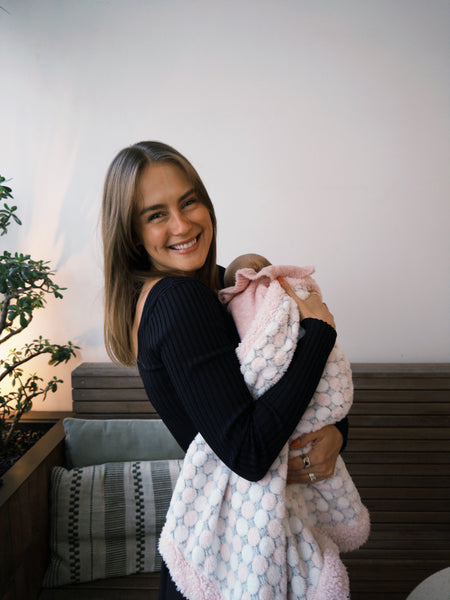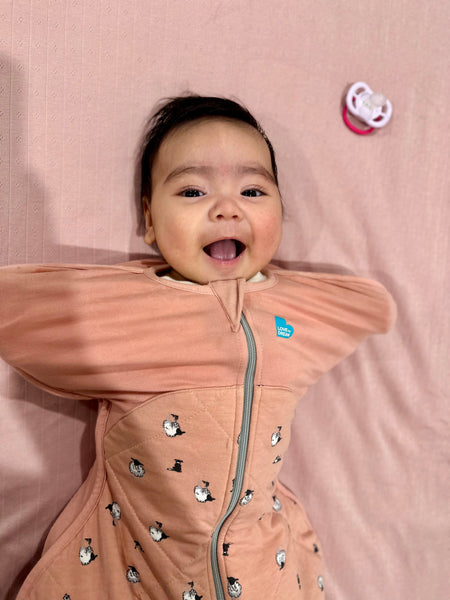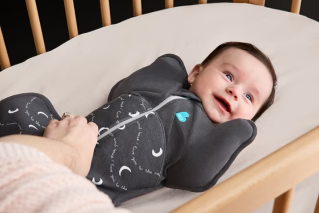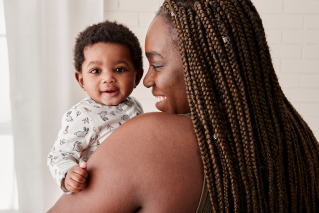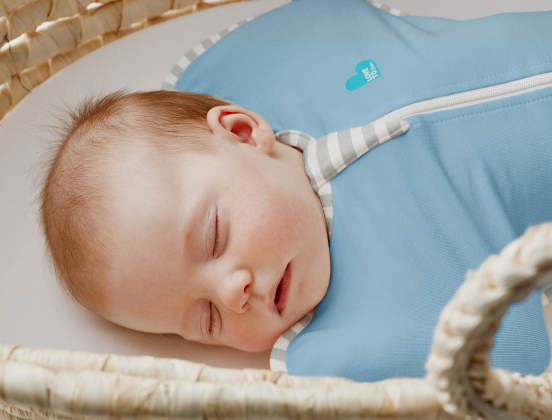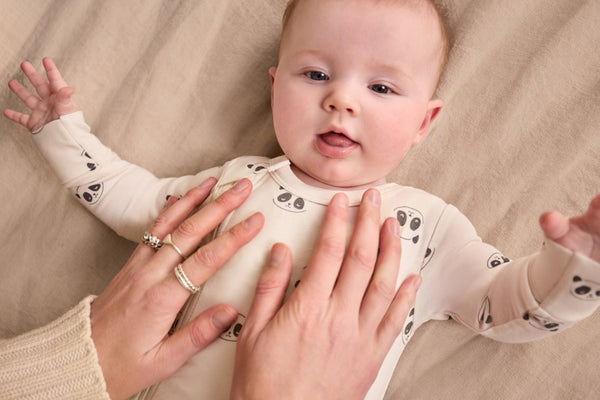When should a newborn baby get their first bath?
Until baby’s umbilical cord has healed, it’s best to ensure their belly is not submerged in water. This will help prevent infection. Until this time, gently sponging baby clean, avoiding the navel is sufficient.
Unless there is a specific medical requirement to bathe your baby, it’s suggested to decide on a time within the first week to give your baby their first bath. Choose a time when baby is relaxed and a time when you can give your undivided attention. If you are able to have your partner, a friend or relative nearby for the first couple of baths, it can be helpful and help soothe any nerves.
Before the first bath there are a couple of things to have organised:
- Ensure you have everything you need within easy reach for washing baby, drying baby and dressing baby. There won’t be an opportunity once your baby is being washed to leave them to get anything you may have forgotten.
- Wet babies can be slippery! You will need both your hands to support your baby’s head and neck while washing them in the bath.
- Ensure the room or bathroom is not too cold, newborn babies can become cold quickly as they are unable to regulate temperature at this stage.
- Bathing babies should be a relatively quick process. By all means enjoy some bonding time and take time to introduce your baby to the soothing sensation of water after washing them if they enjoy it, but taking long baths may not be as appealing to your baby as it might be to you. Babies can become cold and uncomfortable if baths go on too long.
What happens if you don’t bathe your newborn?
While it’s certainly not necessary to bathe your newborn baby every day, a regular bath approximately 2-3 times per week is a good idea. This will help reduce the likelihood of infection and can provide both baby and carer with a regular bonding ritual. Bathing can also help to sooth your baby and encourage sleep.
When is the best time to bath a newborn baby?
The time of day you choose to bath your baby is not particularly important. The most important thing is to choose a time where you are both relaxed, when baby is not hungry and when you will be free from distraction.
Some parents choose to create a sleep routine around bathing baby in the evening, just before putting them down for their nighttime sleep, but if morning works better for you and bathing is more enjoyable when your baby is alert, it is perfectly fine to bathe your baby in the morning.
Should you give your newborn a bath before or after feeding?
It’s best not to bathe your baby directly after a feed, give your baby some time to release any trapped air first, probably around 5-10 minutes. You should also make sure your baby is not hungry just before you bathe them. If baby is hungry, then a bath may not be the soothing experience it was intended to be.
Where should you bathe a newborn?
A full-size tub is rarely necessary for bathing a newborn, but can be used provided you can comfortably kneel or sit alongside the bath and reach down easily. A clean sink or baby bath can often be a lot easier to use and manoeuvre your baby in.
It’s important to note that while bath support devices are helpful, they may not be as suitable for the newborn stage and you should never leave your baby unattended in a bath support device..
Baby’s bath temperature: What is the most ideal and safest water temperature?
The ideal temperature for bathing your baby is between 37°C and 38°C. To ensure you’re keeping the bath temperature within a safe and comfortable range, using a bath thermometer is ideal as they can also continuously monitor the changing temperature of the bath.
When can you give a newborn baby a bath with soap?
You can use a mild baby wash from the first bath if you’d like to, though regular soap is not recommended. If you choose to use a wash, ensure you use a gentle wash formulated for babies. Strongly perfumed, regular soaps or soap products with chemical foaming agents are not recommended for newborns as they can strip the skin of its natural moisture and cause dryness and irritation.
Step by step guide on bathing a newborn
Bathing your newborn shouldn’t be a long process as newborn babies can become cold quickly. To give you confidence when approaching the first couple of your baths, you may like to follow our step by step process outlined below:
- Gather supplies: Ensure you have your baby’s towel, a sponge or washcloth, a plastic cup to trickle water over baby nearby. Also have prepared the clothes you are going to dress them in after the bath including a nappy/diaper.
- Fill the sink or baby tub: Fill a clean sink or baby tub with warm water ensuring the temperature within a safe range. Baby bath thermometers are useful here.
- Undress baby: Gently undress baby to prepare them for the bath.
- Clean Eyelids: While cradling baby with one hand ensuring your are supporting their head and neck, gently wipe baby’s eyes from the inner corner, outwards with a damp washcloth or damp cotton wool..
- Wash baby's face with water: Delicately clean your baby’s face with a washcloth and water only, there is no need to use soap on baby’s face.
- Wet baby's head with water: Use your hand or a plastic cup to gently trickle small amounts of water over your baby’s head. Lather a small amount of baby shampoo and gently rinse.
- Wash entire body with soap: While holding baby with one hand, use your other hand to lather some mild baby wash over your baby’s body including between the folds of their skin and their fingers and toes, then ensure you rinse the wash off thoroughly.
- Clean diaper area: While washing, pay particular attention to baby’s bottom, to ensure you clean of any build-up of dirt and help prevent irritation.
- Rinse off soap with a clean washcloth: Use your washcloth to ensure that the baby wash you used has been thoroughly rinsed off.
What to do after a newborn’s bath?
When you have cleaned your baby, it’s time to dry them off and get them dressed.
- Lift baby out: Gently lift your baby out of the bath with both hands and place them in the waiting towel.
- Wrap baby in soft towel: Wrap baby in a soft towel to dry them and keep them warm in the transition from the bath to being redressed. Ensuring the towel is soft will prevent it from irritating baby’s delicate skin.
- Pat Dry: Gently pat baby dry, ensuring you dry under arms and in any skin creases where water can get trapped.
- Apply relevant creams, ointments: If your baby is suffering from skin dryness, you may choose to apply any creams you are using at this stage.
- Dress baby: Put nappy or diaper on baby then dress them in something clean and comfortable.
Should you moisturise your newborn baby after a bath?
If your baby is showing signs of skin dryness or flaky skin, applying a gentle baby moisturiser after bathing is the ideal time to do it. If your baby has no signs of skin dryness, it’s not necessary to apply a moisturiser.

